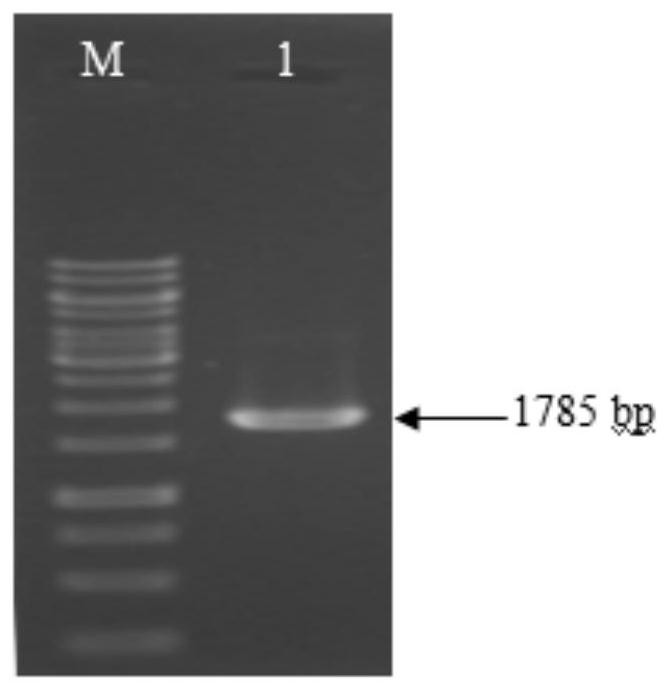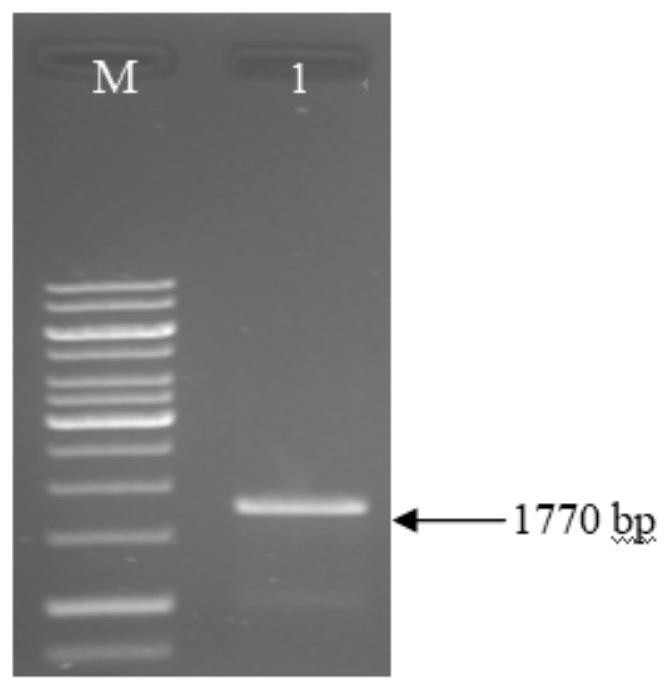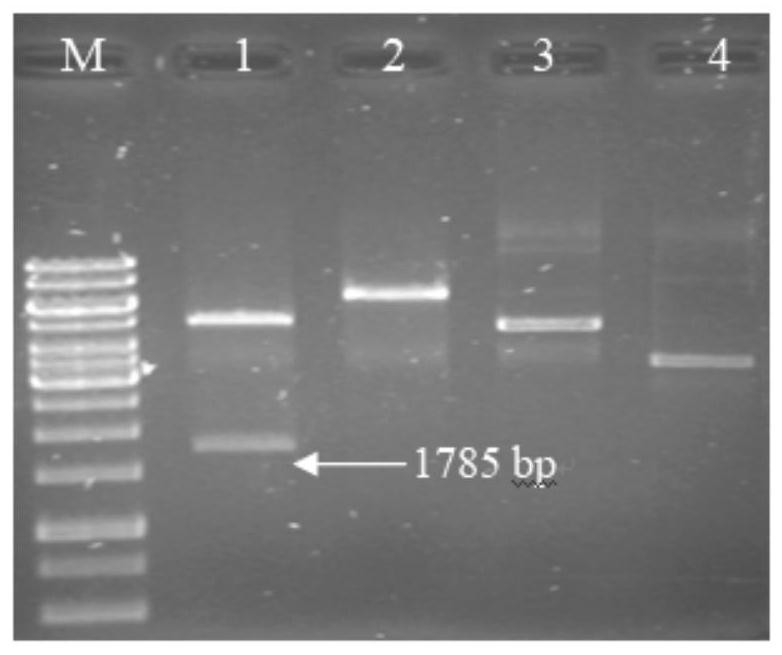Recombinant bacterium containing novel PHA chimeric enzyme and preparation method and application of recombinant bacterium
A recombinant bacterium, a new type of technology, applied in the field of molecular biology, can solve the problem of low production capacity of PHA, and achieve the effect of increasing the production of PHA
- Summary
- Abstract
- Description
- Claims
- Application Information
AI Technical Summary
Problems solved by technology
Method used
Image
Examples
Embodiment 1
[0047] Example 1 contains phaC Ah Synthase Recombinant Bacteria and Its Application
[0048] In this embodiment, the parent uses Aeromonas hydrophila WQ (A.hydrophila WQ) PHA synthase (PhaC Ah ).
[0049] 1. PHA synthase gene cloning:
[0050] The sequence of Aeromonas hydrophila WQ (A.hydrophila WQ) was obtained from NCBI, and primers AH1 and AH2 were designed based on this sequence.
[0051] Using the plasmid pUC19-PhaPCJ preserved in our laboratory as a template, with AH1 as the upstream primer and AH2 as the downstream primer, PhaC was amplified by PCR Ah .
[0052] AH1 sequence is: GCT AAGCTT CTAATGAGCCAACCATCTTAT
[0053] AH2 sequence is: TTT GAATTC TCATGCGGCGTCCT
[0054] The PCR amplification system is: ddH2O 32.5 μl, 5×Prime STARES DNA Polymerase buffer 10 μl, dNTP Mixture 4 μl, template DNA 1 μl, upstream primer AH1 (10 μM) 1 μl, downstream primer AH2 (10 μM) 1 μl, PrimeSTARES DNA Polymerase 0.5 μl.
[0055] PCR amplification conditions were: pre-denaturati...
Embodiment 2
[0078] Example 2 contains phaC Re Synthase Recombinant Bacteria and Its Application
[0079] In this embodiment, the parent uses R.eutropha PHA synthase (PhaC Re ).
[0080] 1. PHA synthase gene cloning:
[0081] The sequence of Alcaligenes eutropha H16 (R.eutropha H16) was obtained from NCBI, and primers RH1 and RH2 with HindIII and EcoRI restriction sites were designed based on this sequence.
[0082] Using the R.eutropha genome as a template, using RH1 as the upstream primer and RH2 as the downstream primer, phaC was amplified by PCR Re .
[0083] The RH1 sequence is: GAT AAGCTT CTAATGGCGACCGGCAAAGG
[0084] The RH2 sequence is: TAC GAATTC TCATGCCTTGGCTTTGACGT
[0085] The PCR amplification system is: ddH2O 32.5 μl, 5×Prime STARES DNA Polymerase buffer 10 μl, dNTP Mixture 4 μl, template DNA 1 μl, upstream primer RH1 (10 μM) 1 μl, downstream primer RH2 (10 μM) 1 μl, PrimeSTARES DNA Polymerase 0.5 μl.
[0086] PCR amplification conditions were: pre-denaturation at 9...
Embodiment 3
[0109] Embodiment 3 contains the recombinant bacterium of novel PHA chimeric enzyme and its application
[0110] 1) Secondary structure prediction to find chimeric enzyme binding sites
[0111] Three methods of Predator, GOR4, and SOPMA were used to detect A.hydrophila WQ PhaC Ah with R.eutrophaH16PhaC Re sequence for secondary structure prediction. Results: As the connecting peptide in the middle of the molecule, the random coil has a relatively loose structure, relatively small interaction, and extremely small rotation resistance around a single bond. Therefore, it does not have a unique three-dimensional structure and an optimal conformation, and is suitable as a connecting region.
[0112] 2) Using the biological analysis software Vector NTI 6.0 to compare the sequences of the two enzymes
[0113]
[0114] Results: Through sequence alignment and secondary structure prediction, the amino acid indicated in red, that is, the 159th amino acid of R.eutropha and the 154th ...
PUM
 Login to View More
Login to View More Abstract
Description
Claims
Application Information
 Login to View More
Login to View More - R&D
- Intellectual Property
- Life Sciences
- Materials
- Tech Scout
- Unparalleled Data Quality
- Higher Quality Content
- 60% Fewer Hallucinations
Browse by: Latest US Patents, China's latest patents, Technical Efficacy Thesaurus, Application Domain, Technology Topic, Popular Technical Reports.
© 2025 PatSnap. All rights reserved.Legal|Privacy policy|Modern Slavery Act Transparency Statement|Sitemap|About US| Contact US: help@patsnap.com



